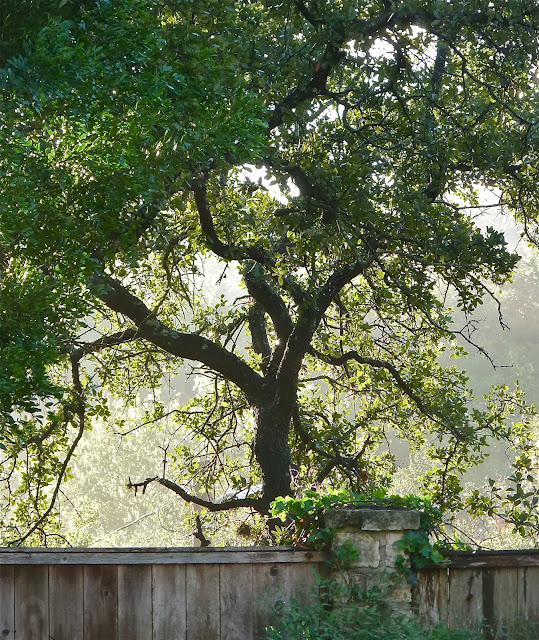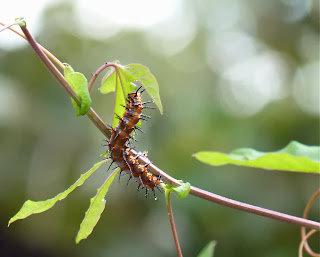While I was growing up we openly acknowledged my Mom had a pretty substantial magazine habit. She allowed herself a couple of subscriptions to tide her over, but most of the magazines at our house were the ones she bought herself as a "little extra treat" during her weekly trips to the grocery store.
My mother read her magazines like she read the daily newspaper. Cover to cover. After her first read through she would go back and work any word puzzles and take any tests proffered. She never tore them apart - that would have offended her deep respect for the printed word.
Having grown up during the Depression, my Mom was a saver by nature. There was no paper recycling those days which meant rather than toss out something she'd paid for, she held on to most of her magazines indefinitely. On the surface of it her rationale for keeping them was quite utilitarian.
Naturally she never knew when something she'd read in a magazine might come in handy. Some periodicals had recipes she wanted to try, others had decorating ideas she might eventually want to implement. She wouldn't be able to tell in advance when she'd want to put hands on a particular article, so she needed to keep them all. Just in case.
Eventually, when the cast offs had drifted to the far back of our overstuffed magazine holder, I would casually, carefully slide a targeted magazine out to take to my room to read in private. There was no real need for subterfuge - these were all mainstream women's magazines and they were benign as the day is long. My stealth was a self imposed discipline because that's the kind of quirky kid I was.
Once I got the magazine to my room I'd close my door, hop up on my bed and impatiently page past the vast majority of the articles. I ignored recipes and household tips alike. What I was after, what completely captured my imagination, was any article featuring a makeover. More specifically I was searching for "Before and After" shots.
I would pore over the photographs for long stretches, examining them carefully, looking for the discernible differences large and small. This was decades before Photoshop so aside from lighting, cropping and altering poses, it was much harder to fool the eye with after effects or tricks. Most of the makeovers - women's haircuts, make-up, redone rooms, pieces of furniture - whatever the subject of the renovation might be - represented more a study in why
this was not just different, but
better than that.
Fast forward four decades and I'm still a sucker for the "Before and After" format. One of the few regrets I have in doing my own gardening and landscaping is when I forget and don't get a "before" shot. There's nothing I like better after my work is done than to critically review whatever changes I made, deciding whether they are merely different, or actually represent an improvement. (I'm typically fine with either but the distinction still fascinates me.).
Here's a for instance.
Along our hilly curbside hell zone, the border between our mixed plantings and the neighbor's turf lawn spends most of the hottest months as a visual "oh so you think you're some sort of a gardener?" rebuke. The overgrowth reminds me ten months of the year that so far the score is Bermuda Grass 99 : Gardener 1. No wonder I typically head the other direction as I leave the driveway. Going that way is uphill in every sense of the word.
But. Every year once the temperatures dip into whatever passes for "workable" I dig out the area and remove every bit of Bermuda root I can find. This limits what I can plant here, because candidates not only have to tolerate the strangling effect of the grass but also the disruptive effects of my digging it all out prior to replanting.
Here is what is looks like most of the year. "Before", in spades.
 |
| I cheated - this is only a "sorta before". This is actually after I'd pulled a lot of the longest grass runners off the top. |
Unfortunate, I know. I try not to let this area make me feel bad about myself. But take a second look at how this corner appears "After" my Sisyphean Bermuda removal efforts.
Not everybody's ideal but better, yeah?
 |
| Ahhhh. It's a nice view while it lasts. |
One of the handful of plantings that survives the extreme heat and occasional shut down of the sprinkler system over here is not a native or even a near neighbor, but an adaptive plant I bought one four inch pot of as an experiment many years ago.
These little pointers are
Dyckia, a genus of the Bromeliad family. One of the more ancient forms, these originally hail from South America where they reportedly form mats even at high altitudes.
I'm not aware of the species name. If the pots at the nursery were marked I failed to make a note. (I do that all the time thinking I'll remember after I get things in the ground and I so do NOT and always kick myself after.) I think they might be Dyckia choristaminae because they stay very small. Granted, these dyckia are not particularly showy specimens. They stay under six inches and don't display variegated color or send out bloom stalks either one.
In fact if you aren't looking for them they really don't catch your eye. What they do and keep doing to win my respect however, is they stubbornly slowly multiply, no matter their situation. They repel deer, endure heat, drought, cold, and stiff competition. Additionally and more important for this area, they survive my pulling them out by the roots annually. Dyckia I salute thee! Maybe not a native, but Texas tough to be sure.
Now, indulge me a moment for one other Before and After just to prove a little point. This before and after photo set includes a shout-out not only to my Hub (love you sweetie!) but also to Kat, author of the ever delightful
Hill Country Mysteries. Happiest 17th anniversary to you and Denny, Kat! He's a lucky guy.
Both Kat and my Hub warned me in no uncertain terms the deer would take my decision to un-pot and transplant a root bound flame leaf sumac from the fenced back into the beds out front as an open invitation to browse.
 |
| According to local experts I might as well hang a "Come and Get It" sign on this one. |
So, just to demonstrate that I can and do (on occasion) listen to what I'm told? Ta daaaa. Fencing. Of a sort. It is the best I could manage with materials on hand to if not deer proof the little tree, at least offer the discouraging word.
 |
Keep it moving, keep it moving. Nothing to see eat here, Bambi. |
Browsing aside, I have significant doubts this sumac will survive the transplantation process, especially if we have a hard winter as predicted. However, if it survives and gets well established in this spot, then even the occasional chomp back by deer ought not prevent it from being a bit of a show-off in its own right. The red display this tree could offer every Autumn will be a distracting visual treat to pleasantly distract me while I'm up at that corner pulling Bermuda grass out. Again.
That's an "After" shot worth waiting for.



















































